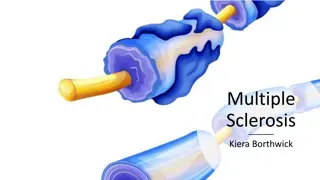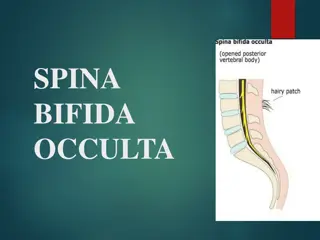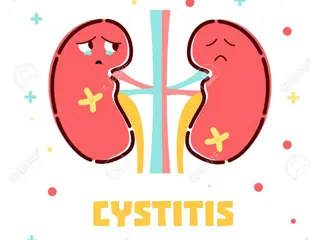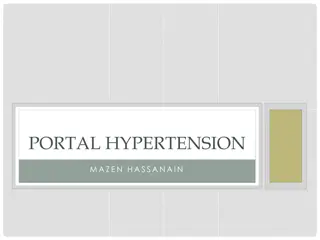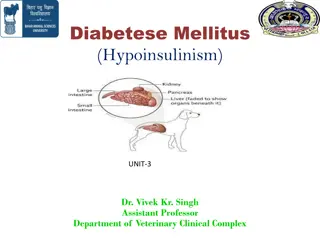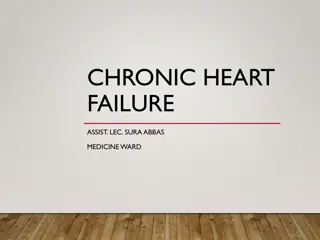Understanding Otosclerosis: Causes, Symptoms, and Treatment
Otosclerosis is a condition characterized by abnormal bone remodeling in the middle ear, affecting the transmission of sound waves. This article explores the definition, introduction, and the process of hearing in relation to otosclerosis. Learn about symptoms, causes, diagnosis, and treatment options for this common condition that impacts hearing in millions of individuals.
Download Presentation

Please find below an Image/Link to download the presentation.
The content on the website is provided AS IS for your information and personal use only. It may not be sold, licensed, or shared on other websites without obtaining consent from the author. Download presentation by click this link. If you encounter any issues during the download, it is possible that the publisher has removed the file from their server.
E N D
Presentation Transcript
StudyMafia.Org Otosclerosis Submitted To: Studymafia.org Studymafia.org Submitted By:
Table Contents Definition Introduction How do we hear? Symptoms of Otosclerosis Causes of Otosclerosis Diagnosis of Otosclerosis Treatment of Otosclerosis Conclusion 2
Definition Otosclerosis is a term derived from oto, meaning of the ear, and sclerosis, meaning abnormal hardening of body tissue. 3
Introduction The condition is caused by abnormal bone remodeling in the middle ear. Bone remodeling is a lifelong process in which bone tissue renews itself by replacing old tissue with new. In otosclerosis, abnormal remodeling disrupts the ability of sound to travel from the middle ear to the inner ear. Otosclerosis affects more than three million Americans. Many cases of otosclerosis are thought to be inherited. White, middle-aged women are most at risk. 4
How do we hear? Healthy hearing relies on a series of events that change sound waves in the air into electrochemical signals within the ear. The auditory nerve then carries these signals to the brain. First, sound waves enter the outer ear and travel through a narrow passageway called the ear canal, which leads to the eardrum. The incoming sound waves make the eardrum vibrate, and the vibrations travel to three tiny bones in the middle ear called the malleus, incus, and stapes the Latin names for hammer, anvil, and stirrup. 5
How do we hear? The middle-ear bones amplify the sound vibrations and send them to the cochlea, a fluid-filled structure shaped like a snail, in the inner ear. The upper and lower parts of the cochlea are separated by an elastic, basilar membrane that serves as the base, or ground floor, upon which key hearing structures sit. Incoming sound vibrations cause the fluid inside the cochlea to ripple, and a traveling wave forms along the basilar membrane. Hair cells that sit on top of the membrane ride this wave and move up and down with it. 6
How do we hear? The bristly structures of the hair cells then bump up against an overlying membrane, which causes the bristles to tilt to one side and open pore-like channels. Certain chemicals then rush in, creating an electrical signal that is carried by the auditory nerve to the brain. The end result is a recognizable sound. Hair cells near the base of the cochlea detect higher-pitched sounds, such as a cell phone ringing. Those nearer the middle detect lower- pitched sounds, such as a large dog barking. 7
Symptoms of Otosclerosis Hearing loss, the most frequently reported symptom of otosclerosis, usually starts in one ear and then moves to the other. This loss may appear very gradually. Many people with otosclerosis first notice that they are unable to hear low-pitched sounds or can t hear a whisper. Some people may also experience dizziness, balance problems, or tinnitus. Tinnitus is a ringing, roaring, buzzing, or hissing in the ears or head that sometimes occurs with hearing loss. 8
Causes of Otosclerosis Otosclerosis is most often caused when one of the bones in the middle ear, the stapes, becomes stuck in place. When this bone is unable to vibrate, sound is unable to travel through the ear and hearing becomes impaired. Why this happens is still unclear, but scientists think it could be related to a previous measles infection, stress fractures to the bony tissue surrounding the inner ear, or immune disorders. Otosclerosis also tends to run in families. It may also have to do with the interaction among three different immune-system cells known as cytokines. 9
Diagnosis of Otosclerosis Otosclerosis is diagnosed by health care providers who specialize in hearing. These include an otolaryngologist (commonly called an ENT, because they are doctors who specialize in diseases of the ears, nose, throat, and neck), an otologist (a doctor who specializes in diseases of the ears), or an audiologist (a health care professional trained to identify, measure, and treat hearing disorders). 11
Diagnosis of Otosclerosis The first step in a diagnosis is to rule out other diseases or health problems that can cause the same symptoms as otosclerosis. Next steps include hearing tests that measure hearing sensitivity (audiogram) and middle-ear sound conduction (tympanogram). imaging tests such as a CT scan are also used to diagnose otosclerosis. Sometimes, 12
Treatment of Otosclerosis Currently, there is no effective drug treatment for otosclerosis, although there is hope that continued bone-remodeling research could identify potential new therapies. Mild otosclerosis can be treated with a hearing aid that amplifies sound, but surgery is often required. In a procedure known as a stapedectomy, a surgeon inserts a prosthetic device into the middle ear to bypass the abnormal bone and permit sound waves to travel to the inner ear and restore hearing. 13
Treatment of Otosclerosis It is important to discuss any surgical procedure with an ear specialist to clarify potential risks and limitations of the operation. For example, some hearing loss may persist after stapedectomy, and in rare cases, surgery can actually worsen hearing loss. 14
Conclusion Otosclerosis is a disorder in which abnormal bone forms around the stapes a tiny bone within your inner ear. This abnormal bone growth prevents the stapes from vibrating properly, causing a decrease in hearing. Otosclerosis surgery offers good long term results. Despite the worsening of thresholds, the level of hypacusis ten years after surgery is lower than the levels observed before surgery. 15
References Google.com Wikipedia.org Studymafia.org Slidespanda.com
Thanks Thanks To To StudyMafia StudyMafia.org .org







